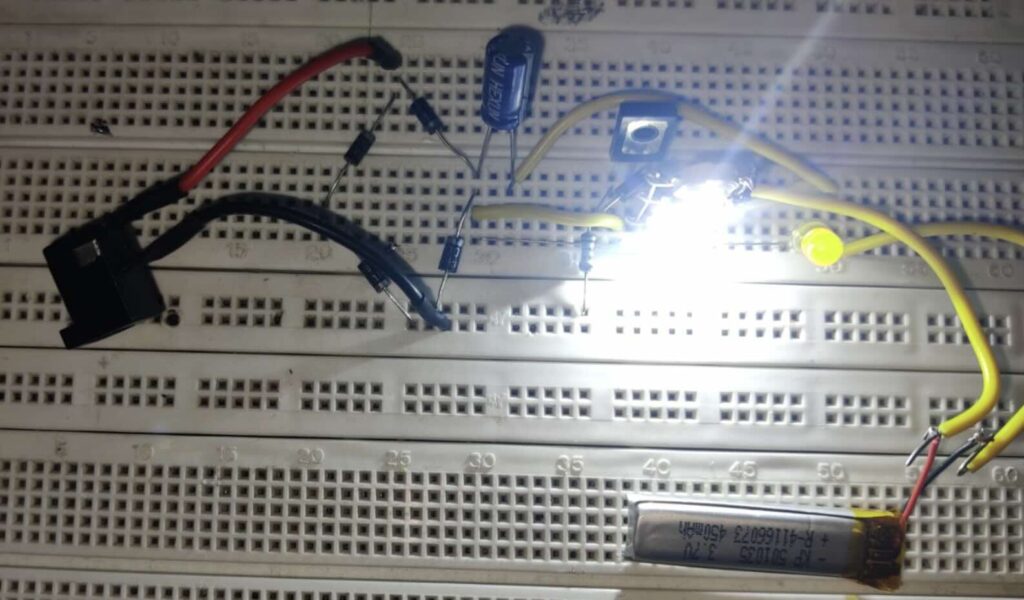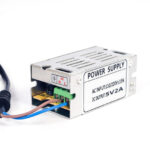In this article, we’ll explain how an inverter or emergency bulb operates. An inverter bulb is an emergency LED bulb. However, the term is confusing because there’s no conversion process (from dc to ac or vice versa) in the circuits where these bulbs are applied. The technology lets the bulbs automatically light during a power outage and recharge their internal battery when the ac mains power is back on.
Working principle
An inverter LED bulb offers a two-in-one package. With regular ac mains power, it functions as a typical light bulb. But, if the power goes out, it turns into an emergency light bulb.
Most of these bulbs come with lithium-ion batteries that offer about three to four hours of backup. They also need three to four hours to fully charge. Once fully charged, the bulb smartly stops the charging process to prevent overcharging and protect the battery. Interestingly, these bulbs continue to charge the internal battery even when operating normally.
Many inverter LED bulbs also come with a charge-only mode. This mode allows users to charge the internal battery with the LED bulb turned off. When there’s a power outage, the inverter bulb automatically switches on to become a dc emergency light — which can be switched off if not needed.
These bulbs offer features like fully automatic control, low power consumption, and high efficiency. Their backup power source and electronic control circuit are configured to determine the switch state during a power cut.
Circuit diagram
Here’s a simpler breakdown of the circuit:
- Battery: A power source, such as a 12 V lead-acid or a 3.7 V lithium-ion battery for backup.
- Dc-dc converter (boost converter): Boosts the battery voltage to the level needed to power the LED bulb.
- Inverter circuit: Switches the bulb between using the mains and battery power.
- Manual switch: Lets users manually choose between battery and mains power.
- Charging circuit: Charges the battery when the mains power is available.
The connection setup:
- The mains power connects to the inverter circuit
- The inverter circuit output connects to the dc-dc converter input
- The dc-dc converter output connects to the LED bulb
- The switch connects in parallel with the mains power input to the inverter circuit
- The charging circuit connects to the battery and the mains power input
How the inverter bulb works
An emergency inverter LED bulb has a tiny battery and a clever inverter circuit. When there’s a power outage, the inverter circuit kicks in, making the bulb use the battery power.
The LED bulb lights as normal, drawing power from the battery until electricity is restored. Once power is restored, the inverter circuit switches the bulb back to using the mains power.
To summarize:
- When there’s mains power, the inverter circuit sends it to the LED bulb and charges the battery.
- If the mains power goes out, a switch activates the inverter circuit, supplying battery power to the LED bulb via the dc-dc converter.
Conclusion
This setup ensures an LED bulb can act as an emergency light, keeping a room lit up even if the regular power goes out.
You may also like:
Filed Under: Electronic Projects













Questions related to this article?
👉Ask and discuss on Electro-Tech-Online.com and EDAboard.com forums.
Tell Us What You Think!!
You must be logged in to post a comment.